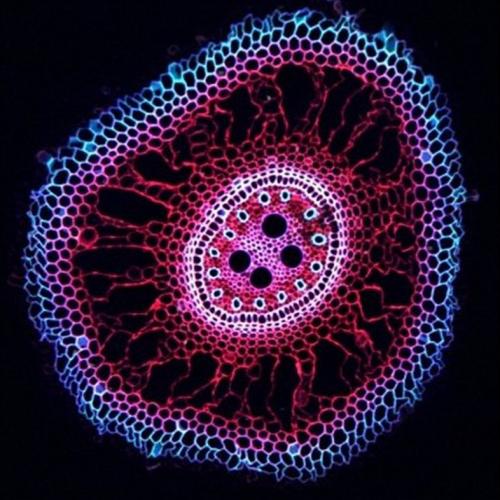Copy Link
Add to Bookmark
Report
Alife Digest Number 039

ALIFE LIST: Artificial Life Research List Number 39 Tuesday, September 18th 1990
ARTIFICIAL LIFE RESEARCH ELECTRONIC MAILING LIST
Maintained by the Indiana University Artificial Life Research Group
Contents:
DPE tech report - hardcopies available
Re: Artificial Life Digest, #38
----------------------------------------------------------------------
Date: Tue, 11 Sep 90 12:14:05 PDT
From: schraudo%cs@ucsd.edu (Nici Schraudolph)
Subject: DPE tech report - hardcopies available
Hardcopies of the previously announced technical report
"Dynamic Parameter Encoding for Genetic Algorithms" are
now available - request technical report LAUR 90-2795
via e-mail from office%bromine@LANL.GOV, or via plain
mail from:
Technical Report Requests
CNLS, MS-B258
Los Alamos National Laboratory
Los Alamos, NM 87545
USA
- Nici Schraudolph.
------------------------------
Subject: Re: Artificial Life Digest, #38
Date: Tue, 11 Sep 90 13:24:26 PDT
From: brucec@phoebus.labs.tek.com
>
> In my thinkings about the brain, and other physical systems I became more
> aware of how the complexity of physical systems seems to crystalize at a
> number of different levels. For example, a complete understanding of the
> brain seems not to depend on knowledge of the state of every atom bound to
> it. The complexity of the brain seems to crystalize out into a number of
> levels, the cellular being perhaps one of the lowest and maybe some sort
> of symbolic or conceptual levels being amongst the highest.
>
> My question then is, why does the complexity crystalize out so elegantly
> like this?
>
> I think you have an interesting observation. Since a cell seems to have a
> certain unity of purpose or function to us, we might expect that it's parts
> would exhibit some kind of organization that "crystalizes" when we consider
> the whole cell. However, there are several things to consider. The systems
> we study will be limited to those that we can perceive. In other words, what
> about the system composed of the "billions and billions" of cells comprizing
> the creatures of earth? What about the system composed of the organic molecules
> all those cells are built out of, or exchange, etc. That may seem to just be
> a higher level of crystalization, but there are all sorts of other systems that
> are interwoven with these systems, which may render the idea of a hierarchy of
> levels unrealizable. Or maybe we could just say that the organization is
> multi-dimensional.
>
> The temptation is strong to use Occam's Razor to weed out the "true" levels
> of crystalization; those systems that are most complete and have the least
> complex interfaces. But, remember that we are evolved systems ourselves.
> The things that seem "simple" to us depend on our categorizations, on what
> information our senses and instruments bring to us, and on what our (evolved)
> brains choose to do with that information. How will we control for the
> possibilty that Occam's Razor works best when Occam is shaving himself?
>
> Jeff
There's been a good deal of controversy in theoretical biology circles over
the "objective reality" of the boundaries of the levels of a hierarchy.
For instance, Allen and Starr (1) in an entire book on the nature of hierarchy
in biological systems continually emphasize their belief that the
boundaries are entirely dependent on the observer, but Salthe (2) says that,
while there may be some fuzziness in the boundaries that's
observer-dependent, looked at with a reasonably coarse resolution the
boundaries are "real" (whatever that means to you) objects. I lean towards
Salthe's side with the caveat that the boundaries depend to some extent on
what you are trying to demark with them.
Humans (at least those with a Western civilization / scientific
reductionist background - no pejorative conotation) do have a tendency to
try to simplify hierarchical descriptions so as to minimize the number of
channels which cross the boundaries, especially those channels which form
parts of feedback loops. Unfortunately, this doesn't always provide an
accurate description of a given system, since it is often the very feedback
loops which stabilize the hierarchical levels as separate entities.
The "crystallization" concept is an interesting one: I believe that it
relates to the phase change in a dynamical system which "freezes out"
particular branches of a system's bifurcation trajectory in phase space
into higher level (that is, higher up on a hierarchy) behaviors. Looked at
in this way, the cystallization is so neat because it must be in order for
the chosen trajectory branch to be stable. If the flows along connections
between the partitions don't add up to negative feedback, they won't be
stable, and the system won't endure; if they do add up to negative
feedback, they will tend to stabilize both the connections themselves and
the boundaries they cross.
> In "The Blind Watchmaker" (I'm pretty sure it is), Dawkins
> speculates along similar lines about the hierarchical
> organization of evolved systems. His argument, which
> I found quite convincing, is that hierarchically organized
> things are (very roughly) less likely to break under
> small perturbations, and easier to fix if they do
> break. His analogy was to a watchmaker who makes
> a complex watch as a number of simpler subassemblies;
> if he messes up one subassembly, he only has to redo
> that one, not the entire watch.
This analogy comes (originally, I think) from a paper (3) by Herbert Simon
published in 1973. The paper is an excellent and not at all dated (in my
opinion, of course) introduction to the concepts of hierarchy theory.
1)
@Book{,
author = "Allen, T.F.H., and Thomas B. Starr",
title = "Hierarchy: Perspectives for Ecological Complexity",
publisher = "The University of Chicago Pres",
year = "1982",
OPTeditor = "",
OPTvolume = "",
OPTseries = "",
OPTaddress = "",
OPTedition = "",
OPTmonth = "",
OPTnote = ""
}
2)
@Book{,
author = "Salthe, Stanley N.",
title = "Evolving Hierarchical Systems",
publisher = "Columbia University Press",
year = "1985",
OPTeditor = "",
OPTvolume = "",
OPTseries = "",
OPTaddress = "",
OPTedition = "",
OPTmonth = "",
OPTnote = ""
}
3)
@InBook{,
author = "Simon, Herbert A.",
title = "The Organization of Complex Systems",
chapter = "1",
publisher = "George Braziller",
year = "1973",
OPTeditor = "Pattee, Howard H.",
OPTpages = "3-27",
OPTvolume = "Hierarchy Theory",
OPTseries = "The International Library of Systems Theory and Philosophy",
OPTaddress = "",
OPTedition = "",
OPTmonth = "",
OPTnote = ""
}
---------------------------------------------------------------------------
"Of course it's alive; didn't it tell us so?" - Turing, the next generation
Bruce Cohen, Computer Research Lab email: brucec@tekcrl.labs.tek.com
Tektronix Laboratories, Tektronix, Inc. phone: (503)627-5241
M/S 50-662, P.O. Box 500, Beaverton, OR 97077
--
------------------------------
End of ALife Digest
********************************














